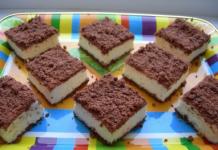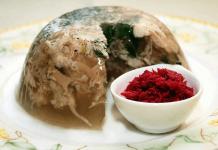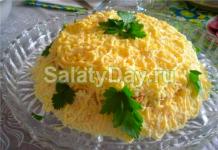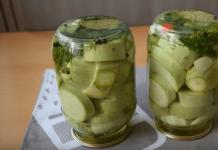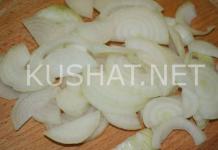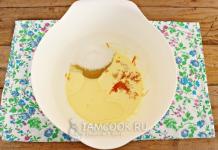Aquatic plants or hydrophytes growing in natural bodies of water not only decorate them, but also perform the functions of cleaning and creating a biological microclimate. Using them when landscaping a pond or swimming pool on the territory of a country house or garden plot will help decorate the landscape.
Adaptation of plants to an aquatic environment
In any pond, river or other body of water there are always many different plants that grow and reproduce well in their natural environment. They are characterized by leaves with a large surface, sometimes dissected. The root system is usually weak and is designed to be fixed to the bottom soil; some species do without roots. The stems have cavities and a system of intercellular spaces that help consume oxygen when immersed in water, which also keeps them afloat.
Hydrophytes are divided into several species, each of which has its own habitat and performs a specific function in a given biozone. They are also characterized by a method of reproduction in which seeds spread under water: when they fall to the bottom, they begin to germinate.
Types of aquatic plants differ from the area where they are located:
- coastal, which are located along the coast, exposing some of the stems and leaves above the surface: horsetail, arrowhead, cattail, reeds, reeds;
- semi-aquatic: irises, pondeteria, susak, marigolds, etc.;
- aquatic, whose entire life is spent at the depth of the reservoir: water moss, hornwort, chara, nitella;
- floating on the surface or in the water column: pistia, fontinalis moss, water buttercup, duckweed, watercolor, marsh flower, water chestnut;
- deep-sea or submerged, which take root in the ground, and above the surface there are flowers: egg capsule, water lily, orontium, lotus;
- oxygen generators - plants immersed in water and actively releasing oxygen necessary to ensure the vital activity of all inhabitants of the reservoir: water star, hornwort, marsh turcha, spicate urut.
Plants of natural reservoirs
All natural bodies of water are surrounded by thickets of coastal vegetation, which grows in stripes along the banks of rivers, lakes and ponds. The only exception may be the leeward side, which is devoid of large plantings.
Various types and forms of aquatic plants are grouped or arranged in stripes depending on the direction of flow or depth. Along the shore, as a rule, there are dense thickets of reeds or reeds with hard leaves. Fish prefer to live among plants with softer stems and leaves.
The species composition of underwater plants in natural reservoirs can change quite significantly over time, since some of them deplete the soil, release harmful substances into the bottom, and then die. They are also influenced by climate or weather changes, anthropogenic impact, and environmental pollution.

Coastal
Plants growing along the perimeter of the reservoir define the border with the shore. These include:
- The aquatic plant arrowhead (sagittaria or common bogwort) is widely used for landscaping ponds, its root is represented by cord-like shoots with rounded tubers, is immersed in water, the stem has a porous tissue filled with air bubbles, its length is 0.2-1.1 m. Above-water part has a petiole, the leaves are triangular in shape, similar to an arrowhead up to 30 cm long. In mid-June, sagittaria blooms and blooms until the end of summer with white flowers with a spherical middle; inside the petal there may be red or cherry spots. In total, there are about 40 species of mireweed, including decorative varieties. Many of them are used to decorate man-made ponds and go well with other aquatic plants.
- Reed or ocheret is a herbaceous plant from the Poaceae family, which is found in the middle zone in all reservoirs with a depth of up to 1.5 m, has hard stems that repel fish, and has long rhizomes, from which long hollow stems up to 5 m in height grow. The reed inflorescence is a violet-silver panicle. Used in oriental medicine.
- Skirpus or reed is a perennial pond plant, growing up to 3.5 m tall, has a cylindrical strong stem and paniculate/capitate inflorescence, prefers swampy places. Many people confuse it with reed.
- Cattail, which is often confused with reeds, has a rigid stem with long leaves, at the end of which there is a beautiful brown velvet ear with seeds. Grows in reservoirs up to 1.5 m deep.

Near-aquatic
Submerged or semi-aquatic plants are common in the wild and are available for cultivation in artificial ponds.
Examples of aquatic plants growing in shallow or near water:
- Swamp iris - distinguished by bright yellow flowers with a brown pattern, prefers sunlit areas and fertile soil, stem height up to 1.5 m, suitable for ponds, planted to a depth of 40 cm.
- Smooth iris - blooms from June to October with blue or purple flowers, up to 1 m high, goes well with other aquatic plants.

- Marigold (Caltha) (swamp, thin-cupped, fistula, etc.) is a winter-hardy, unpretentious plant (poisonous!), prefers sunny places, tolerates flooding up to 20 cm, has golden, white-yellow flowers, planting depth depends on the variety (20-120 cm).
- Pondetheria - decorated with blue or purple flowers, loves the sun and nutritious soil, a capricious and non-winter-hardy plant (transported indoors for the winter), planting depth is about 8 cm.
- Susak (Butomus) is an unpretentious plant, blooms with small pink-crimson flowers, grows very quickly, planting depth is 10 cm.
- Amphibious knotweed (Persicaria) - blooms all summer with bright pink small flowers arranged in a cone, when planting they are buried down to 0.5 m, it is better to plant in containers, winter-hardy and unpretentious.

Oxygenators
One of the most important types of underwater plants that supply the entire body of water with additional oxygen. Many of them are also used as food for fish. Their advantage is also the improvement of sanitary conditions and biological purification of water.
Names of aquatic plants-oxygenators:
- Common marsh grass (Callitriche), also called water star.
- Urut (Myriophyllum) belongs to the perennials of the Slanoyagodnikov family; it has shoots rising above the water and a creeping rhizome. Long stems (up to 1.5 m) are covered with thin leaves and form an elegant lace of thickets under water, for which it is called “pinnate”. It is grown as a coastal plant, propagated vegetatively, its parts can be planted directly into the ground to a depth of 1.2 m in the spring and summer. Looks great in small ponds, where it forms beautiful patterns under water.

- Turcha (Hottoni) - is a relative of primroses, has about 100 species in the Primrose family. The second name - “water feather” is given for the rosette consisting of dissected feathery leaves floating in the water. In the summer months, flower stalks appear, which rise 15-30 cm above the water and are decorated with flowers; in the fall it dies and overwinters at the bottom in the buds.

- Hornwort (Ceratophyllum) is dark green and has a long stem that branches at the top. The leaves are dissected into segments, grows at a depth of up to 9 m, has unique aquatic pollination, thanks to which it is widely distributed in the reservoirs of Russia and other European countries. Instead of roots, it has stems that hold the plant on the ground in the silt. In autumn, the upper part dies off, and the shoots with buds overwinter at the bottom of the reservoir.
- Elodea - belongs to the perennials of the Vodokrasaceae family, lives entirely under water, shoots branch up to 1 m long, and has small leaves located throughout the stem. It blooms very rarely with small white flowers with red sepals.
floating plants
Such plants can be successfully used to decorate an artificial pond. They do not require any maintenance, you just need to carefully monitor the growth rate so that the pond is not completely overgrown with them. The difference between these aquatic plants is that the roots are not fixed and therefore float freely, while the leaves and flowers are located on the surface.
The most popular floating ones:
- Duckweed covers the entire surface of the reservoir with a green carpet and is a small plant consisting of stems held together in several pieces (leaves). It blooms only in artificial reservoirs, reproduces vegetatively when young leaves are separated from the mother leaves, and overwinters at the bottom.
- Watercolor (Hydrocharis) is a perennial plant with small, round leaves at the base in the shape of a heart, from which fleshy roots hang down. The flowers are small, white, located 3-5 cm above the surface of the water above the leaves.

- Azolla (Carolina or fern) came to Europe from the tropical reservoirs of America, resembles openwork moss, grows very quickly, which is why it has to be removed from the pond with a net, and by autumn the leaves acquire a reddish color.
- Eichhornia, which has the name “Water hyacinth,” is a floating, heat-loving plant with dark green leaves that blooms in late summer with lilac-blue or yellow flowers, similar to orchids. In the fall, it must be moved indoors to an aquarium, placing it in a ring float, where the plant successfully overwinters. According to scientists, it has fantastic abilities to process organic pollutants (that is, it loves dirty water bodies).

- Water chestnut (Chilim) is an annual, has original fruits decorated with horns (for which it received the names “devil’s” and “horned”), with which it clings to the bottom. Floats thanks to leaves that have swellings with an air layer. It reproduces by self-pollination, but only in regions with a warm climate: in the second half of summer, white flowers appear, protruding above the water, and by autumn, hard drupes of 1-15 pieces ripen. on each plant, which gradually sink to the bottom.
deep sea
These aquatic plants have rhizomes buried in the bottom of the reservoir, and stems, leaves and flowers are located above its surface. Their main diet consists of organic matter in the bottom soil. The leaf blades are usually large in size. This creates shade and prevents the water from heating, which helps prevent the active proliferation of small algae. The main advantage of deep-sea species is their beautiful flowering.
Some types of deep-sea plants:
- Orontium or “Golden Club” (Orontium) is a perennial with green-blue leaves, silvery below, in April-May it blooms with inflorescences-cobs sticking out of the water (12-15 cm long), consisting of small yellow flowers, similar to white-yellow pencils.
- Nuphar (Nuphar) is a perennial that is widely used for landscaping large bodies of water that have shade. Its roots are fixed in the bottom soil, and leaves and yellow flowers floating on the surface, located on thick peduncles.

Water lily and lotus
These 2 types of deep-sea plants are among the most spectacular and spectacular, having bright beautiful flowers and large leaves. When planted in a home pond, they will become a wonderful decoration.
The water lily flower (Nymphaea) takes its name from water nymphs in various European mythologies. There are 35 species and are divided into 2 groups: tropical and winter-hardy. The latter are suitable for growing in open reservoirs in the central and northern parts of Russia, preferring sunny places with standing water. The required area for each plant is 0.5-4 square meters. m.
The most common winter-hardy varieties of water lilies:
- The white water lily, which is often found in natural reservoirs, has powerful roots up to 5 cm thick; petioles and peduncles are located on the surface, which begin flowering in May and continue until frost. The leaves are round and wide up to 25 cm, the flowers are snow-white, each lasts 4 days, after which the fruit sets under water. After ripening, the seeds spill out of the boxes and gradually sink to the bottom, where they then germinate.

- The flower of the fragrant water lily is white, emitting a pleasant aroma; the leaves are bright green in color, turning red at the bottom over time. Some varieties bloom yellow (spotted Sulphurea), pink or cream flowers.
- Hybrid water lily (nymphea) - becomes a decoration of any body of water, thanks to its beautiful flowers and heart-shaped bright leaves (some with spots or red tints).

Lotus (Nelumbo) is a perennial aquatic plant, the leaves of which are located both under water and on the surface, funnel-shaped and large, with a diameter of up to 70 cm. The lotus is decorated with large fragrant flowers (up to 30 cm) with pink-white petals, placed brightly in the center -yellow stamens. The fruits are dark brown in color with 30 seeds, the germination of which lasts for tens and hundreds of years. In the East, this plant is worshiped and ancient legends and traditions are told. In Europe, it has been grown in greenhouses and artificial ponds since the 18th century.

Creating a reservoir: rules
Using aquatic plants to decorate an artificial pond in a garden plot or on the territory of a country house will create a unique natural landscape and provide the opportunity to admire beautiful leaves and flowers throughout the warm season.
Regardless of the size of such a reservoir, it is necessary to select several types of plants with different flowering periods, sizes and shapes of leaves, also taking into account their height and planting depth. The main rule is to maintain biobalance in an artificial pond, in which for the safe coexistence of all plants, fish and microorganisms it is necessary to ensure that the vegetation covers the water surface by half or more.
The center of the pond is given over to beautifully flowering plants - water lilies, the variety of which is selected based on the area of the pond. Coastal species (arrowhead, calamus, susak) are planted along the edge; forget-me-nots or marigold are planted in shallow water; moisture-loving plants (sedges, irises, daylilies) with a strong root system can be placed on the soil along the edge, which will help preserve the shore from erosion.
Free-swimming species (duckweed, teloris, vodokras) under favorable conditions multiply very quickly and can occupy the entire surface, so they must be periodically removed with a net.

Planting aquatic plants in a pond
Landscaping an artificial reservoir can be done in 2 ways:
- planting plants in the ground in depressions made along the perimeter of the pond, which is more suitable for steep banks;
- in special containers that are placed on stands or ledges; this method allows them to be moved if necessary.
The planting depth depends on the type: for water lilies it is up to 1.5 m, for coastal or marsh plants - 5-20 cm. Optimal planting time: from April to July. Oxygenators are usually planted first, water lilies are planted when the water is heated, then floating ones, and the coastal zone is settled last.
If desired, fish can be released into the pond, but only after 4-6 weeks, when all the plants have taken root and the water has settled.
Basic rules for planting aquatic plants and constructing a pond:
- place it away from deciduous trees so that falling parts do not clog the pond;
- ideal is sunlight in the morning and afternoon, and at noon the plants will be comfortable in a little shade;
- It is periodically necessary to thin out fast-growing species so that they do not obscure other plants and the surface of the reservoir.
With the correct selection of species and varieties of hydrophytes, their growth zones and flowering periods, the effort required to care for an artificial reservoir can be reduced. Bright greenery and plants blooming throughout the warm season will decorate the entire surrounding landscape.
Very often, decorative ponds of various shapes and sizes are used to decorate suburban areas. And for this element of the landscape to look beautiful and natural, it must be supplemented with a variety of plants. Such plants perform not only an aesthetic function, but also protect water from overheating and flowering. However, in order for all ecosystems of a reservoir to function normally, it is necessary to plant the plants correctly, taking into account their characteristics and beneficial properties.
All plants for ponds are divided into three main types:
- deep-sea;
- floating;
- underwater.
Deep sea plants
The root system of plants belonging to this group is located at the bottom of the pond, and the leaves and inflorescences are on its surface. Due to the large size of the leaves, deep-sea plants are able to create shade, which protects the water in the pond from overheating and does not allow algae to grow. The water remains light, clean and does not bloom.
The most common deep sea plant is water lily(nymphea). Today, many varieties of water lilies have been bred, differing from each other in color, size, shape of the flower and leaves, duration of flowering and growing conditions.
Also popular representatives of this group of plants are egg capsule (yellow egg capsules are most often found in our region), Aponogeton two-spiked, brazenia, marsh flower and lotus.
floating plants
Their thread-like roots are not fixed in the soil, but are located in the water column, the leaves are on the surface of the reservoir. The main task performed by floating plants is water filtration. Their leaves cover the water surface of the pond, preventing the penetration of light and preventing algae from multiplying. And the roots absorb mineral salts, not giving the algae sufficient nutrition. Thanks to floating species, the water in reservoirs remains transparent and crystal clear.
The most popular plants of this group are duckweed, azolla fern, wolfia, watercolor, pistia, pondweed, bagel and others. They multiply sockets, formed in August or early autumn.
Underwater plants
This type is also called oxygenators, because their main function is to saturate water with oxygen. Some representatives of underwater plants also absorb mineral soda, softening the water and stopping the growth of blue-green algae, which causes water bodies to “bloom.”
Underwater plants create favorable environment for the life of fish and amphibians. They not only provide food for fish, but also absorb their waste through their rhizomes, purifying and filtering the water.
Oxygenators are capable of sending shoots to the shore or they can rise above the water. Among the representatives of the underwater group, the most famous are swampweed, urut, elodea and hornwort.
How to choose aquatic plants
When choosing plants for a water feature, you should not be guided only by their appearance; you must also start from conditions of their detention and beneficial properties. One of the determining factors is the size and depth of the pond. So, for a small reservoir, duckweed is well suited, which will also serve as food for fish. In the area near the banks you can plant sedge, bramble and loosestrife. Not recommended for registration small ponds use tall or disproportionately large plants.
 big body of water, on the contrary, allows the use of a wide variety of plant species. In such ponds, water lilies, egg capsules, pondweed or turcha will look great. Near the banks, arrowhead and susak look beautiful, and on the banks - basilisk or Siberian iris.
big body of water, on the contrary, allows the use of a wide variety of plant species. In such ponds, water lilies, egg capsules, pondweed or turcha will look great. Near the banks, arrowhead and susak look beautiful, and on the banks - basilisk or Siberian iris.
However, it should be borne in mind that when designing reservoirs there is no need to plant too many plants for the following reasons:
- Firstly, some of them (for example, duckweed) multiply quickly and can turn your pond into a swamp.
- Secondly, tall or broad-leaved species can interfere with the growth and normal functioning of other plants, blocking penetration of light to them.
Methods for planting aquatic plants in a pond
It is recommended to plant all aquatic plants from April to August. It is advisable that the weather be cloudy or even rainy. Despite the fact that plants can be planted in the ground, experts still recommend planting in a container or containers.
Landing technology plants is as follows:

The advantage of this planting method is the ability to limit the excessive growth of plants in a pond. Such problems arise especially often when decorating reservoirs with fast-growing species, for example, water lilies.
How to care for aquatic plants?
If the reservoir is populated with plants and fish correctly and has a water purification system, then caring for it is not at all difficult: you just need to regularly remove excess algae. The smaller the pond, the more it is at risk of blooming and cloudy water. But even large bodies of water regularly need maintenance.
Main works consist of removing vegetation residues from the surface of the water. To do this, you can use a net, a rake or special tongs. You can cut aquatic plants, shoots and dead, darkened and cloudy leaves using scissors with a long telescopic handle.
Before the start of the cold period with floating plants cut off overwintering buds and store them in a jar until spring. Heat-loving plants are transferred to a warm place for the winter.
Regularly required remove duckweed. Faded flowers and ovaries of aquatic plants are trimmed.
Pond care does not cause great difficulties, but an artificial pond will be a wonderful decoration for any site and will give many good impressions.
Swamp plants are used for landscaping areas with high levels of soil moisture and acidity. They are usually used in lowlands and along wetlands to form landscape designs. See the marsh plants in the photo and read the brief characteristics of each species in this review. This will allow you to choose the appropriate types for landscaping your territory. The names and photos of marsh plants are given in alphabetical order for ease of information retrieval.
The roots of these plants should be located near the shore, in the soil under water, most of the plant itself is above the surface of the water, in the air. These shallow water plants soften the boundary between water and shore, and their flowers and leaves decorate ponds and streams. There are many such plants; depending on the type, they are planted in water to a depth of 15-30 cm on a terrace in a pond or in shallow water. Their roots are located either in the basket or directly in the soil. Let's list some of them.
Calamus (Acorus calamus) and its photo
Calamus marsh (Acorus calamus)- This is a frost-resistant herbaceous perennial similar in appearance to iris, its height is up to 1 m, its leaves are sword-shaped and pointed. An interesting variety is “Variegata” with longitudinal cream stripes on the leaves; it reaches a height of 60-80 cm and is quite frost-resistant in the conditions of the Moscow region. Calamus grows well at a depth of 8-15 cm in the sun and shade, and perfectly purifies water.
Look at the photo of marsh calamus and options for its use:
Photo gallery

Marsh calla palustris and its photo
Swamp whitewing (Calla palustris)- this low perennial 15-20 cm high is interesting for its large white flowers with a yellow spadix, appearing from mid-May to the end of June. By the end of summer, bright red fruits are formed. It is planted at a depth of 5-10 cm, it improves water quality. If planted in a sunny position in calm water, its shiny heart-shaped leaves up to 20 cm wide will eventually completely cover the shore of the pond, the plant forms a dense carpet, grows quickly but is easily controlled.
This effect is well demonstrated by photos of the marsh calliper, which can be viewed below:
Photo gallery
Mannik (Glyceria) and its photo
Large or aquatic manna variety (G. maxima), "Variegata" with yellowish longitudinal stripes on the leaves reaches a height of 50-60 cm. It grows well in partial shade, takes root quickly, and is characterized by aggressive growth. In waterlogged areas and shallow water at a depth of up to 15 cm, it forms lush clumps, but it also grows well in dry areas. If you have planted this plant in some place in the garden, it will be difficult to completely destroy it. If you simply throw a piece of root into a natural reservoir, a huge, beautiful, abundantly flowering clump grows. Plant in an artificial pond only in a container.
Look at examples of using manna in the photos of plots:
Photo gallery
In addition to limiting growth and keeping it within certain limits, variegated glyceria does not require care. It is good for decorating the coastal zone of a reservoir and swamp. Although glyceria is an aggressor, it is a very decorative aggressor; do not expel it from the garden, just think in advance how to tame it.
Swamp iris (Iris pseudacorus) and its photo
This is the most unpretentious of all irises, growing in damp places in our region, with powerful strap-shaped vertical leaves up to 1.2 m tall and abundant flowering. Of particular note is the form of marsh iris with white flowers, as well as the variety with double flowers. The variegated form of the marsh iris “Variegata” is elegant, only 60-70 cm high; in the spring the leaves of this variety are white-green, and in the summer they turn completely green. Feels great in the sun and shade. Planting depth in water is 5-25cm.
Photo gallery
Marsh marigold (Caltha palustris) and its photo

A perennial plant that forms loose bushes up to 40 cm in height, with leathery, shiny, rounded leaves. It blooms from the end of April for 20 days with golden-yellow flowers up to 4.5 cm in diameter. Prefers highly moist places, but can also grow in dry places with plenty of watering. planted to a depth of 5 cm.
The species plant is also attractive, but garden forms with white flowers and double yellow flowers are especially good.
This is one of the earliest beautifully flowering coastal plants, as evidenced by photos of marsh marigold:
Photo gallery
Common arrowhead (Sagittaria sagittifolia) and its photo

They got their name because of their arrow-shaped surface leaves. It is planted at a depth of 8-12 cm. It blooms in June - August, on a triangular peduncle there are whorls with three flowers, each of which has three white petals with a crimson spot and three sepals.

Famous variety "Flore Pleno" with double flowers, wintering without problems in the conditions of the Moscow region.
Photos of the common arrowhead amaze with the beauty of this plant:
Photo gallery
Umbrella hornbill (Butomus umbellatus) and its photo
 This is one of the most attractive beautifully flowering aquatic plants. The long, narrow leaves have a triangular cross-section. Peduncles without leaves 0.7-1.2 m high are crowned with an umbrella of 20-30 pink flowers up to 2.5 cm in diameter. Flowers do not bloom at the same time; in each umbrella there are buds, just opened flowers, and already withered flowers. In the center of the flower there are bright crimson pistils and stamens. During flowering, susak is very decorative; it blooms in June - August.
This is one of the most attractive beautifully flowering aquatic plants. The long, narrow leaves have a triangular cross-section. Peduncles without leaves 0.7-1.2 m high are crowned with an umbrella of 20-30 pink flowers up to 2.5 cm in diameter. Flowers do not bloom at the same time; in each umbrella there are buds, just opened flowers, and already withered flowers. In the center of the flower there are bright crimson pistils and stamens. During flowering, susak is very decorative; it blooms in June - August.
It is planted to a depth of 8-10 cm, but the plant can also grow in swampy soil along the banks of the pond. The best place for planting is sunny, with nutritious soil. Divide the plant every two to three years, otherwise the quality of flowering will deteriorate.
A properly grown common arrowhead in the photo allows you to appreciate the power of this plant:
Photo gallery
Common reed (Phragmites australis) and its photo

A perennial species plant up to 4 m high, with long and thick, creeping rhizomes and erect stems with numerous nodes, it is too large for a garden pond. It forms thickets in damp places and along the banks of natural reservoirs. The leaves of the species plant are grayish-green, hard, elongated, wide. The inflorescence is a large panicle with many individual brown-violet or yellowish small spikelets. Blooms in July - August.

Effective variety "Variegatus" only 1.5 m high with bright leaves with yellow longitudinal stripes. It grows well in shallow ponds and swampy soils, and can tolerate dry conditions, but grows much weaker. Prefers open, sunny places. It is aggressive, requires limiting the growing area, cannot be planted in reservoirs with a film coating, its rhizomes easily pierce the film. Can be submerged in water up to 50 cm, but also thrives on the shore.
The various types of common reed in the photo demonstrate the possibilities of their use:
Photo gallery
Plantain chastuha (Alisma plantago-aquatica) and its photo

An aquatic plant with ovoid leaves, in July - August it blooms with pale pink flowers collected in a large pyramidal panicle up to 70 cm high. Chastuha is not demanding on growing conditions, tolerates poor soils, can grow in the sun and in partial shade, suitable for planting according to damp places and on the banks of reservoirs at a depth of 5-15 cm. Looks better in reservoirs decorated in a natural style.
Many people dream of creating a unique water corner in their apartment. Some people simply do not have enough time and space to accommodate the original beauty of creating a water world, others think that creating beauty in water is quite problematic.
In order to correctly and practically implement the creation of a water corner, it is recommended to know which plants growing in water are the most popular and unpretentious for living in an indoor environment. In addition, there is an interesting approach to making an indoor pond with your own hands in a small room.
The human body is designed in such a way that the respiratory system requires optimal humidity. Increased dryness of the environment can provoke various unpleasant consequences for internal organs as a whole. The optimal humidity level that you need to adhere to in order to feel comfortable is 40-75%.
In winter, when a large number of heaters are turned on or central heating is running, when steam is breathing from the radiators, the dryness in the apartment increases to critical levels. To remedy the situation, people are trying to purchase expensive devices that allow them to humidify the area of the room. This technique not only does not contribute to comfort in the home, but can also cause various diseases, adversely affecting internal organs.
In order to achieve comfortable indoor humidity in a natural way, there is one reliable option - to arrange a corner with plants living in water or near a pond.
Such plants boast rich greenery and a romantic appearance. A corner of paradise with lush vegetation, cool surroundings and well-chosen exotic wallpapers not only help to moisturize the room, but also create an atmosphere of comfort and relaxation.
In addition, any indoor plants contribute to the production of oxygen and purification of the atmosphere inside the apartment. If you choose among plants that promote natural photosynthesis, it is better to give preference to marsh shrubs. They process carbon dioxide much faster and more actively, saturating the room with fresh aromas. To create such coziness and comfort, you can choose various compositions, but the most interesting and popular are lotus, water lily, hydrocleis, water hyacinth (Eichornia), . To make the right choice, it is recommended that you familiarize yourself with them separately.

This exotic flower is a perennial plant with a thin stem, on which linear palm-shaped leaves are located at the very top. The color of the plates may differ depending on the species - light green, rich green or two-tone.
There are a huge number of species in wildlife, but only a few types live in indoor conditions:
- Papyrus - has erect stems, strong structure, topped with leaf blades. The latter have a hanging appearance. Numerous inconspicuous inflorescences form in the axils of the leaves.
- Alternate-leaved (umbrella) - planted at home more often than other representatives of the genus. Can stretch up to 1.7 m in height. The stem is erect, ending in a beautiful umbrella of bright straight leaf blades. The leaves can reach 25 cm in length and up to 1.5 cm in width.
- Spreading - a bush of medium height, reaching up to 90 cm. It is distinguished by long basal leaves and a wide structure. The upper part is distinguished by a significant narrowing, where the umbrellas are collected in inflorescences of 8-12 pieces in a bunch.
Cyperus is the most unpretentious plant that does not require constant care and care, and feels great in an aquatic environment.

A plant that does not refuse aquatic conditions, it likes to be almost entirely in water. Calla is a swamp flower found in the wild in the tropical forests of South America. The height of the plant can vary from small sizes of 15 cm to significant diameters of up to 50 cm. The shrub feels great not only at sub-zero temperatures, but also in frozen water. Therefore, keeping the plant indoors does not seem to be an unfavorable living condition for the shrub.
Calla lily leaves have a large diameter. In the center the leaf has a wide core, and towards the end it becomes pointed. The upper surface is glossy, shiny, with visible veins. When a peduncle forms, the latter begins to grow directly from the base of the leaf. The inflorescences are cylindrical in shape, represented by a large, thick, glabrous structure.
The flower is distinguished by grace and nobility.
Its distinctive feature over other plants is the peduncle: a rich yellow-hued spadix, like a blanket, enveloped by a snow-white petal. The inflorescence is interesting not only during the flowering period, but also at the moment of fruit set. After the bush fades, round, large fruits of a bright scarlet hue are formed within a month. They are firmly attached to the cob. After ripening, the cob becomes covered with mucus and at the end of summer sinks under water, where new plants develop from ripened seeds.

One of the most beautiful creatures growing on the surface of the water is the water lily. It is also called water lily or nymphea. Its historical homeland is considered to be fresh water bodies of Latin America.
The plant has a unique structure:
- Its rhizomes sink into the bottom substrate and have both tubers and horizontal root shoots.
- The shrub forms specific leaf plates - underwater type and floating on the surface of the reservoir.
- Submerged foliage is broad-lanced, filmy. They are necessary in order to cover the root compaction with the rudiments of future above-water leaves and buds, developing inflorescences.
- Floating above-water foliage comes in various shapes: from heart-shaped to round and elongated.
- There is a wax coating on the outside of the plate that prevents the sheet from getting wet.
- When a young leaf is formed, at first it is covered with mucus; only after a certain number of days has passed, a coating appears and the mucus goes away.
- Water lily inflorescences are represented by both sexes. Sizes can vary from the smallest 3 cm in volume to huge ones, reaching 25 cm in diameter. They are placed on a huge peduncle, a strong structure sometimes reaching a maximum of 5 meters.
- The water lily is cup-shaped or star-shaped. Some species emit a pleasant aroma that carries over long distances. At night, the inflorescences close their graceful flowers, hiding their beauty.
Each bud lives on average no more than 5 days. The shape of the plant can be either semi-double or double. The color varies from snow-white to pale pink. The plant begins to bloom in early May, when the spring sun warms up strongly enough and the pond has time to warm up. The flowering period continues until the first cold weather.

Eichornia's favorite habitat is the coast of lakes, small rivers or marshy land at the edge of swamps. She feels great when planted in aquariums and decorative pools.
Features of the plant:
- The plant is endowed with a long stem that extends far under water, clinging to the above-ground sand with its roots.
- A flower, like a water lily, has underwater leaf plates and surface ones. The latter are rounded oval-shaped plates. When touched, a ribbed surface is felt on their surface.
- The leaf itself is located on a long stalk, which is tightly attached to the trunk. The plate can reach 8-9 cm in length and up to 7 cm in width.
- Underwater leaves are characterized by a checkerboard arrangement. The leaves have a narrow shape with a blunt ending. The length of the underwater leaves is much larger than the above-water leaves - reaching 15 cm, but much narrower - only 1 cm.
- During the flowering period, the plant shoots an arrow containing up to 12 large inflorescences. They are presented in a blue tone that shimmers into a purple hue. In the central part the tone darkens somewhat.
- The petals have a fringed shape, and there is always a small yellow spot on one of the petals in the upper corner.
Eichornia can rise a considerable distance above the water level - 55-60 cm. Plants are usually planted in small groups, then their composition seems voluminous and rich than when the plant blooms alone.
There are several types of Eichornia:
- Water hyacinth or excellent - distinguished by the original structure of the plant. Along with an interesting leaf of rich light green color, there is an air chamber on the surface of the reservoir. It is thanks to this structure that the flower stays afloat.
- Variegated - grows in the water column, recommended for rooting in an aquarium. Its leaf structure consists of alternately placed leaf plates, straight in shape, without a stem. The leaf somewhat resembles the leaves of a fern.
When choosing an original plant, you need to rely on the variety of shrubs, so that it doesn’t turn out that you wanted an above-water flower, but what you end up with is an underwater bush.

The original location of the plant is recorded in tropical places in America, where bodies of water with warm, stagnant water are located. The shrub tends to grow and expand quickly. Therefore, if you do not monitor it and periodically do not restrain its growth, in a short period of time it is able to fill large water surfaces with a continuous carpet of green color with bright yellow inflorescences.
Features of the plant:
- Hydrocleis has a dense cylindrical stem that does not attach to anything and floats in the water column. If the water level allows and the rhizomes reach the bottom, then the root is buried in the silt at the base of the river. If the stem breaks off accidentally or intentionally, it does not die, but takes root again and exists as a separate plant.
- Like many aquatic plants, hydrocleis produces two types of greenery - underwater and above-water, floating on the surface. Under water, the leaves are presented in the form of petioles, which are slightly expanded. Elongated leaf plates are placed above the surface, attached to the stem using a cylindrical petiole. The latter do not have a seal inside - they are hollow.
- The leaf blades themselves appear in the shape of an oval or a small heart. They give off a rich light green or slightly green tint, and also have a glossy sheen. When you touch the leaf, you feel that the surface of the greenery is covered with wax.
- The inflorescences produced by the flower are located above the water at a level of 10 cm. The bud, opening, displays 3 voluminous petals of a soft yellow hue. After flowering, triangular fruits are formed, containing a large number of seeds inside.

– powerful plants, with creeping rhizomes, fleshy, knotty structure. It has both internal underwater leaf plates and surface ones. The leaves located on the surface of the water are large, round in shape, attached to elongated cuttings. Underwater leaves have a flat structure, while above-water leaves have a concave, funnel-like surface.
Under natural growing conditions, the inflorescences open to 25-30 cm in diameter.
When counted, each flower has from 22-23 petals to 30 pieces. At first glance, they resemble a water lily in appearance. But their differences lie in the fact that in the lotus all the flowers and greenery are raised above the surface of the water, while in the water lily, on the contrary, they are recessed.
At the moment of flowering, the buds emit a unique aroma when opening. The lotus in any case faces the sun; if it is in the shade, its flowers tend to move or turn to the sunny side. The plant is very heat-loving and requires a lot of sunlight without fear of getting burned.

To grow plants located in water, they need to create all the required conditions. To do this you need to follow certain rules:
- Location – to place aquatic plants indoors, you need to provide a bright, sunny place. But not all plants can withstand scorching rays, so either take into account the type of flower, or shade the indoor pond during peak heat.
- Water – do not immediately place the plant in cold water fresh from the tap. It should be settled, at room temperature. If the water coming from the tap is chlorinated, then you should not use it; it is recommended to draw water from some reservoir. Plants will quickly die in such water.
- Depth – taken into account for different types of flowers. But there should be no liquid less than 5 cm in the reservoir. If necessary, water is constantly added.
- Fertilizing - it is recommended to add hydrogel to the water, which, when swelling, retains water well and releases it if necessary, but you should not overdo it. Fertilizers are suitable for hydrocultures. They need to be mixed in small doses into an aquarium or decorative pond.
- Cleaning - foreign microorganisms that do not belong to the plants that were planted will definitely be present in the water. In order to reduce the growth of weeds, you will have to change the water every 2-3 weeks and clean the walls of the container from plaque.
- Wintering - during the dormant period, plants often get rid of excess vegetation, and therefore the aquarium becomes half empty. To stimulate the appearance of new leaves, you can try moving the pond to a south window or additionally highlighting it with phytolamps.
By adhering to certain rules and features of rooting and growing aquatic plants, you can create an original composition in your apartment. The main thing is to place several types of aquatic flowers in one container so that as they fade, they replace each other and complement each other.
How to make an indoor pond?

To make an indoor pond at home, you need to prepare a container before starting work. The container must be spacious, holding at least 25-30 liters of water. It is desirable that it be decorative, non-corrosive, waterproof and non-toxic.
A prerequisite for the container is a minimum of 15 cm, which will be filled with liquid. Containers that hold at least 60-80 liters are best suited for forming an indoor pond. For reliability, coat the outside surface with varnish, and completely seal the inside with sealant.
The main thing is to choose interesting and interchangeable aquatic plants and flowers.
Place the prepared container in the sunniest place. After pouring water into the container, you should wait until all the particles settle and only, after at least 3-4 days, begin planting work. You can place any plants from a dwarf water lily to a chic lotus, but it is additionally recommended to place oxygenators that can suppress the growth of algae and weeds.
Thus, an indoor pond will be ready that does not require close attention and capricious care. But in return, the owner of such an exotic decoration will receive an area for rest and relaxation.
More information can be found in the video:
Among the numerous plants in reservoirs, both natural and artificial, there are free-swimming aquatic , lost contact with the ground plants.
Some of them create a continuous cover on the water surface.
They attract attention with their unique, original decorativeness, which especially stands out in combination with the water surface of reservoirs. To such aquatic plants relate:
- Watercolor common (Common frog);
These popular floating plants remarkable in that, having lost contact with the soil of reservoirs, they grow and develop due to the absorption of nutrients dissolved in water by all cells of the body.
Watercolor common (Common frogwort)
Family Aquaticaceae, distributed in Europe, the Caucasus and Siberia. This is a perennial herbaceous ornamental plant that free-floats on the water surface of reservoirs. The leaves are wide, round-heart-shaped, leathery, collected in rosettes, located on flexible long petioles. Leaves are up to 7 cm long, 4 cm wide.

Leaves Vodokrasa they resemble the leaves of small water lilies - plants floating on the surface: Long shaggy roots submerged in water extend from each rosette of leaves. The flowers are small, with three small petals, yellow at the base, located on a long peduncle that rises from the center of the leaf rosette.
Blooms Watercolor in June-July. It rarely bears fruit, so it reproduces vegetatively by wintering buds. Winter buds are covered with a mucous membrane, so they can stick to animals, which carry them from one body of water to another.

A frog can become entangled in the long, flexible leaf petioles, which is why Vodokras is called Death to the Frog. For its decorative properties this plant is called Watercolor . Planted out Watercolor when decorating shallow reservoirs in which the plant tolerates wintering well.
Duckweed family, widespread throughout the globe. It is a perennial herbaceous flower free-floating, very small: Duckweed has a modified floating stem (leaf), the size of which is smaller than a grain of rice, and has the appearance of a flat oval-shaped cake of green color. In Duckweed minor, one root emerges from the lower surface of the leaf, which has a thickening at the end.

Very small flowers, almost invisible to the naked eye, are located in the lateral recesses of the modified stem and are surrounded by a membranous cover. Lesser duckweed blooms rarely, the fruit is indehiscent, contains from one to seven seeds, and is sac-shaped.
This multiplies plant floating on water (Duckweed) vegetatively - by branching oval pellets, overwintering buds. A green continuous carpet of Duckweed on the surface of reservoirs can only be seen in warm weather. In late autumn, the cakes die and are immersed in water along with the living buds.

Lesser duckweed is valuable for its high protein content in flat cakes, high yield, and ability to saturate the upper layers of reservoirs with oxygen. All this contributes to stable life in water bodies. Lesser duckweed is a valuable, highly nutritious food for muskrats, muskrats, and waterfowl. The most famous species are: Duckweed three-lobed, Duckweed humpbacked - rarely found.
Family Duckweed, distributed throughout all zones of the globe, with the exception of the polar regions. These are herbaceous, floral, small plants floating free on the surface of the water. They have small, leaf-shaped stems in the form of rounded-obovate plates, greenish above, reddish-brown or violet-purple below.

Several thin, hair-like roots extend from the lower surface of the leaf-bearing stems. This is its difference from Duckweed, which has only one root on the lower surface of the stem. It reproduces vegetatively - by branching leaf-shaped blades and overwintering buds.
Common polyroot is the same highly nutritious food for muskrats, muskrats, and waterfowl as duckweed, since the leafy stems contain large quantities of protein.
Family Salviniaceae, found in the south of the European part of Russia, in the Caucasus. This is a small, free-floating fern on the surface of a fresh body of water. In appearance, does not look like ordinary forest ferns. But it is similar to them in terms of reproduction characteristics, which is why it is classified as a fern.

Stem at Salvinia leafless, green. There are two types of leaves: above-water and underwater. The above-water ones are green, small, oval, rather dense, thick, extending from the stem in different directions. Underwater - brownish, modified, covered with thin hairs, similar to roots. They also extend from the stem, only downwards, towards the entrance. Leaves and stem plants free swim on the water surface of a reservoir.

Tsvetkov at Salvinia never happens, it reproduces by spores. This is where its similarity to ferns lies. It has been noted that Salvinia cannot grow in alkaline water. This plant is listed in the International Red Book.
Eichornia(Water hyacinth)
Family Pontideriaceae, common in water bodies of the tropics and subtropics of America. Eichornia it is an ornamental, exotic, tropical, free-floating aquatic plant. It has a large, blue-violet root. Beautiful glossy dark green leaves, collected in a rosette, grow from a nut-like, round ball. Thickened leaf petioles Eichornia swollen, filled with air and thereby ensuring free floating of the plant on the water surface.

The flowers are pale blue, similar to the flowers of garden Hyacinths (hence the name of the plant - Water Hyacinth). Flower Eichornia It is interesting because inside it there is a pattern similar to the tail of a peacock. The plant blooms from July to October. It reproduces by antennae, grows strongly in rivers, and interferes with navigation.
These are heat-loving, light-loving floating aquatic plants, therefore, from artificial reservoirs located in temperate zones of Europe, Eichornia must be transferred for the winter to well-lit rooms with a temperature of 22 degrees. Moreover, only the roots of the plant from the base to the outlet should be completely immersed in water. The leaves should not touch the surface of the water to prevent them from rotting.

In the spring, as soon as the water in the reservoir warms up well, Eichornia can be lowered onto its water surface. Varieties of Eichornia are known: Eichornia azure - flowers are pale blue with a purple tint; Eichornia Thick-petiolate - flowers are pink, lilac or violet.
It should also be noted that sometimes for a while free-floating plant The Water Chest described in the article "" may also become a "water chestnut".
Vegetative reproduction free-floating aquatic plants
Watercolor reproduces by overwintering buds. By autumn these floating plants At the ends of the side shoots they form buds, which fall to the bottom of the reservoir, where they overwinter. They germinate in the spring of next year. During germination, air cavities are formed in them. With their help, the buds float to the surface of the reservoir, take root and form a rosette of leaves, that is, they give life to young new plants.
Duckweed small, Duckweed multi-rooted They reproduce by overwintering buds and branching of rounded-obovate plates, from which several hair-like roots arise in Duckweed multi-rooted and one root in Duckweed lesser. Branching of the plates occurs as follows. On the side, from one small, rounded-obovate plate, another plate begins to grow like it, from it - a third, and so on.
Then, having separated from the mother, the daughter plates begin to grow independently. Reproducing quite quickly, thus, these plants floating on the surface, soon forming extensive thickets. In late autumn, the plates die off and sink to the bottom of the reservoir along with living buds. After overwintering, in the spring the buds germinate, float to the surface of the reservoir, and give life to new plants in the reservoir.
Salvenia reproduces by spores. Small balls of spores attach to the underside of submerged leaves. In the fall they fall to the bottom of the reservoir, in the spring they germinate, floating to the surface of the reservoir, giving life to new plants.
Eichornia reproduces by antennae, on which young, new rosettes grow. As it grows, Eichornia forms vast, dense thickets.






